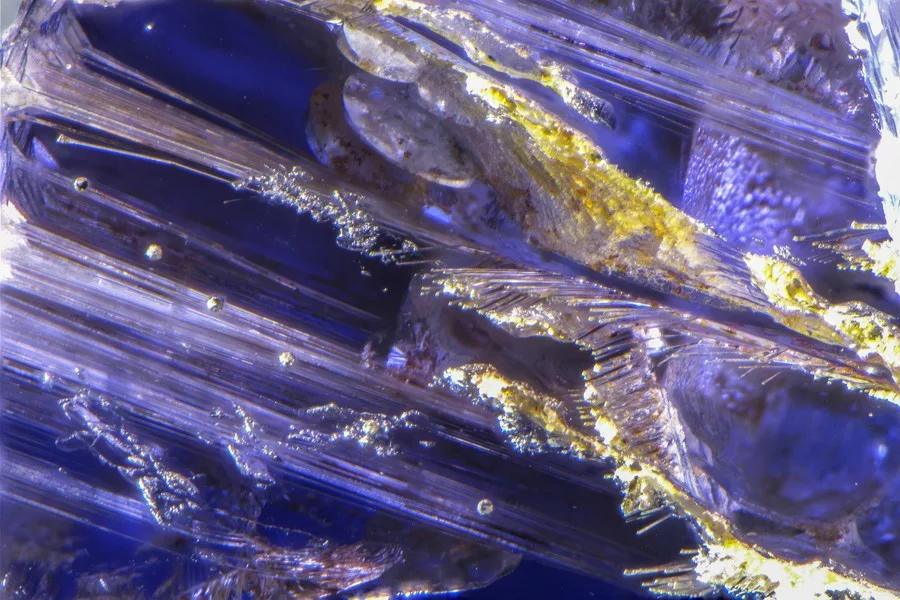Microfeatures of Beryl Group Gems including the Newest Mineral Variety, Johnkoivulaite
By Nathan Renfro
Beryl group minerals often provide clues to their pegmatitic origin in the suite of inclusions contained within such gems. They regularly showcase examples of pegmatitic minerals such as albite, muscovite, spessartine, quartz and other minerals that form in those environments or environments where pegmatitic interactions played a role in their formation, such as contact metamorphism with ultramafic rocks which may result in emerald formation (Figure 1) (London, 2008). They also regularly contain complex fluid inclusions, which can result when gems crystallize in fluid rich pegmatites (Figure 2). While the inclusions found in beryl are generally not diagnostic of a particular origin, they do provide a wonderful view into the types of geologic interactions that are responsible for producing beryl gems. This presentation will focus on a wide cross section of unique inclusions seen in beryl gems from a number of deposits. Recently a new gem mineral was added to the beryl group. A cesium, boron and magnesium rich beryl from Mogok, Myanmar, Johnkoivulaite was named after gemologist John Koivula (Palke et al, 2021). The inclusions in the type specimen of Johnkoivulaite were primarily etch tubes with limonitic epigenetic residue (Figure 3).



References:
- London, D. 2008. Pegmatites. Mineralogical Association of Canada, 347pp.
- Palke, A. C., Henling, L. M., Ma, C., Rossman, G. R., Sun, Z., Renfro, N., Kampf, A.R., Thu, Kyaw., Myo, Nay., Weeramonkhonlert, V. 2021. Johnkoivulaite, Cs (Be2 B) Mg2 Si6 O18, a new mineral of the beryl group from the gem deposits of Mogok, Myanmar. American Mineralogist: Journal of Earth and Planetary Materials, 106(11), 1844-1851.




